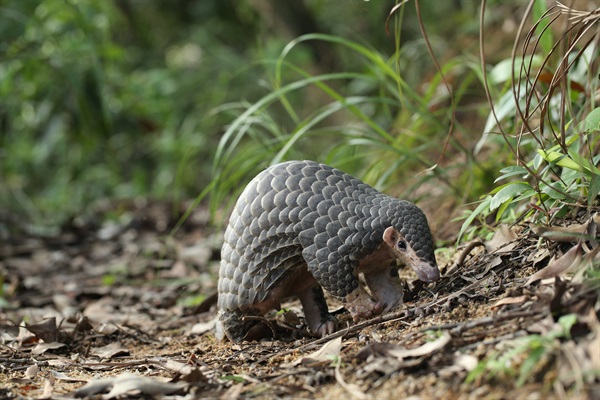
A startled Chinese Pangolin will cover its head with its front legs and curl into a ball, exposing only its sturdy scales. These scaly mammals are often mistaken for reptiles. However, if you look closely, you will find some hair bristles between the scales. Another key mammal characteristic they display is the nursing of young with milk produced from their mammary glands. Females generally give birth to only one pup a year and take care of the young until they can live independently. Local researchers once captured an adorable scene of a mummy pangolin giving her baby a piggyback ride!
The full armour of scales, however, cannot protect pangolins from the threat of extinction. Their peculiar appearance and rarity are the reasons they are desired as a luxurious delicacy in some cultures. Their scales, made of the same keratinous substance as human nails, are claimed to be of medicinal value. As a result, all pangolin species are over-harvested and heavily traded to the brink of extinction, making them known as 'the most trafficked animals in the world'.
| Family | Manidae |
|---|---|
| Scientific Name | Manis pentadactyla |
| Adult Size | 45–60 cm in length (head to body) |
| Habitat | Woodlands |
| IUCN Red List Status | Critically Endangered |
